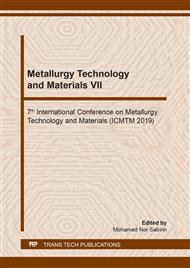p.161
p.167
p.175
p.181
p.186
p.197
p.202
p.208
p.214
A Modified Energy Method for Equilibrium Structure and Strain Energy of Armchair Single-Walled Carbon Nanotubes
Abstract:
Based on molecular mechanics, a modified energy model was proposed to study the angular variation and strain energy of armchair carbon nanotubes under stress-free conditions. In this model, the inversion energy term is added to make the calculation more accurate. The results show that the strain energy of armchair carbon nanotubes is more significantly affected by the added energy term under small diameter, especially when the diameter is less than 1 nm. This has a lot to do with the curvature of the tube. As compared with the unmodified model, the strain energy deviation between the two models decreases with the increase of tube diameter, which also verifies the remarkable characteristics of small diameter. At the same time, the angles change of armchair carbon nanotubes was calculated by using the modified model in the stress-free state, which is also quite different from that of the unmodified one in the small diameter.
Info:
Periodical:
Pages:
202-207
Citation:
Online since:
October 2019
Authors:
Keywords:
Price:
Сopyright:
© 2019 Trans Tech Publications Ltd. All Rights Reserved
Share:
Citation:


